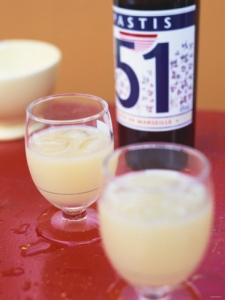What perfume does a bride chose to wear on her special day? It’s often a difficult decision because you want something that makes you feel really special. But when a bride is going to marry the future King of England before approximately 3 billion people, it may be an even harder decision. In Kate Middleton’s case, she chose White Gardenia Petals (henceforth “WGP“) by the British boutique house, Illuminum.
Illuminum is a relatively new perfume house launched in 2011. Its founder is Michael Boadi who also created the line’s sixteen perfumes, each of which falls into four main olfactory groups (citrus, floral, oud and musk). There are four perfumes within each of those four over-arching categories and, supposedly, none of the perfumes contains more than “eight carefully selected ingredients.” According to an interview he gave to Fragrantica, “[t]he Illuminum collection is for those days when you are in the mood for something exquisitely simple and stylish.” He answered some of Fragrantica’s questions about the scent and also explained his vision:
Creating a fragrance from merely eight ingredients was a real challenge, especially if we know that some fragrances include more than 500 ingredients. Finding the right eight ingredients that fit together perfectly, can even take a couple of years of careful planning. […]
Illuminum is the future of Fragrance due to its pared-down nature. If you are looking for minimalism at its purest, then look no further. If you want to smell ginger and pear, that is exactly what you will discover when you explore the Ginger Pear from Illuminum.
Kate Middleton’s decision to wear White Gardenia Petals on her wedding day was a huge coup for Illuminum. According to the Daily Mail, the perfume sold out within minutes of the news of her choice! To get a small idea of the scent (and the massive global obsession with the royal bride), yet another gushing Fragrantica article simpers:
White Gardenia Petals is a perfect choice that really suits the charming and feminine Kate, her beautiful wedding dress and her grace. The notes of this fragrance highlight the refined and very fresh breeze of gardenia, which is a guiding scent of the composition. Unpretentious gardenia is embellished in the heart with a fine trace of coconut, ylang-ylang, jasmine and lily of the valley, laid on the base of amber wood. The fragrance is available as 50 ml and 100 ml EDP.
Michael Boadi announces that White Gardenia Petals at the moment isn’t available anywhere in the world and that the waiting list for the purchase of this fragrance is three months!!!
The Illuminum website describes the perfume as follows:
White Gardenia Petals is as fragrant as a vase of white flowers, quivering in the breeze by an open window. This is a delicate and refined scent – the top note of lily evokes a summer ambiance, whilst heart notes of gardenia, ylang ylang, lily of the valley and jasmine breeze are sumptuous and feminine. Amber wood underscores this light bouquet.
Top notes: Bergamot, Cassis,
Heart: Jasmine, White Gardenia, Ylang Ylang,
Base notes: Precious Woods.
Fragrantica gives very different top notes — namely just coconut and nothing else — but it matters not one jot to the final impression which is: synthetic, floral, air freshener; soap; hair spray; and cheap shampoo. Given that Michael Boadi began as a hairdresser before making it big, I find it sadly coincidental that a man who left that world to create perfumes ended up making something that is a full-circle return to hair salons. And I’m far from alone in that sentiment. In fact, I’m being much kinder than some commentators. On the Fragrantica entry for White Gardenia Petals, one poster compared it to a “toilet cleaning product.”
I’m not sure I would go that far, but I found White Gardenia Petals to be utterly revolting. It’s not anywhere close to being as bad as Montale‘s Lime Aoud (honestly, I doubt anything ever will be) or the stomach-churning nausea induced by L’Artisan Parfumeur‘s Passage d’Enfer, but it was pretty godawful. As many of you know by now, the note that I abhor above all others is soapy and clean, particularly if the fragrance evokes laundry detergent or fabric softener and is expensive to boot. I simply cannot handle it. And, yet, a predominantly soapy scent may be (just barely) more tolerable than Illuminum’s WGP. (I shall have to ponder their relative ghastliness.)
The opening seconds of White Gardenia Petals on my skin was a sharp note of pure rubbing alcohol, only rendered floral. Then, there is an explosion of a thin, artificially airy — but simultaneously heady — shampoo note, with a heavy backdrop of Dove soap. The rubbing alcohol impression is tinged with a faint lemon note, making me wonder if we’re going from bathroom products to dish-washing liquid next. But no. It stays as a sharp burst of white flowers with shampoo and soap. I think Suave makes a white shampoo like this, and I know Dove’s soap is quite close for the soap notes here. The two things are separate “clean” scents in my mind, and they combine most unpleasantly with the very indolic, cheap gardenia and muguet (or lily-of-the-valley) notes. I think Bath & Body Works makes better versions of airy white florals which lack White Gardenia Petals’ strong similarity to hairspray. (It’s almost amusing to read the endless litany of “hair spray” comparisons in the comments on Lucky Scent.)
To be honest, it’s a bit hard to dissect some of the notes for the first hour because I’m overwhelmed by a screeeeeeeeeechingly loud, persistently plastic-y note that is often a dead give-away of something synthetic in a perfume. An even bigger give-away for me personally is the sensation I consistently get from very cheap additives: a feeling of tightness high up in the bridge of my nose, making me feel as though I have sinusitis, along with a faint burning sensation. I suddenly feel as though a headache is around the corner — and it’s been a while since a perfume made me feel that way.
The perfume continues its olfactory equivalent of assault and battery. I don’t smell ylang-ylang at this point, but I do get a strong impression of iris and/or violet. Perhaps my brain associates those notes with powdery fragrances, and White Gardenia Petals has got a definite powdery vibe. The powdery vibe is a bit different from the soap and shampoo/hairspray aspects. It stems more from the musk element which starts to make its presence known about 10 minutes in. It is cloying, and calls to mind Narcisco Rodriguez‘ For Her — only on steroids and amplified by a thousand. For Her is one of the few “clean” perfumes that I would wear if I had a gun pointed to my head, but there is something distinctly unpleasant about White Gardenia Petals’ twist on musky clean. Perhaps because it is all just one cacophonous mishmash of white florals, rubbing alcohol, indoles, powder, musk, synthetics, soap, shampoo, and cotton.
Oh, did I not mention cotton? Because I also get a very strong note of fresh, clean cotton. It sharply calls to mind the Clean line of perfumes (no, I’m not joking) and of their Cotton T-Shirt fragrance in particular. (How I wish I were making all that up.) It is at this point that I write in my notes, “please God, kill me now,” and I go to find some aspirin.
I would have felt like a character in Jean-Paul Sarte’s No Exit if it were not for one thing: this discordant cocktail lessens the volume of its assault, sooner rather than later. After an hour, the sillage is very low, such that I have to sniff my arm (sometimes forcefully) to assess how the fragrance is transforming, if at all. And it does. Many of the clashing notes fade away as White Gardenia Petals turns into simple gardenia scent with a faint undertone of creamy, custard-y, banana-like ylang-ylang. Alas, the soap still remains, as do the hinting wafts of cheap hairspray.
Though its sillage may have become demure, White Gardenia Petals’ persistence is a source of deep misery. Ten hours in, I can still smell some form of cheap, floral soap on my wrist. They say perfumers love synthetic additives because they multiply the longevity of a perfume (I think it may be because of the shape of the molecules), in addition to being a cheap shortcut. It must be true since all the synthetic soapy smells last on me for an extraordinary amount of time.
White Gardenia Petals is meant to be “a vase of white flowers, quivering in the breeze by an open window,” and clearly meant to suit someone like a bride who doesn’t want to be overshadowed by her fragrance. All that is fine and dandy. If people want to wear light florals with a fresh, clean note and demure sillage, all the more power to them. But I find it rather outrageous to charge £70.00 or $125 (on Lucky Scent) for a small 1.7 oz/50 ml bottle of revoltingly synthetic notes combined with florals that Bath & Body Works, The Body Shop, and some others can do as well — if not better. And that’s totally ignoring the fact that you can smell like Dove soap for about $1.25!
As one Fragrantica commentator noted, “Illuminum feature themselves in the media as a brand of the royals, like Creed does.” I’m happy for them. But if Kate Middleton had not chosen to wear this scent on the day she turned into the Duchess of Cambridge, I highly doubt that anyone would queue to spend the kind of money that Illuminum is charging to smell like cheap hairspray. If you want something light, fresh, airy, floral and bridal, try Issey Miyake‘s L’Eau d’Issey Miyake. Try anything, but I wouldn’t recommend this.

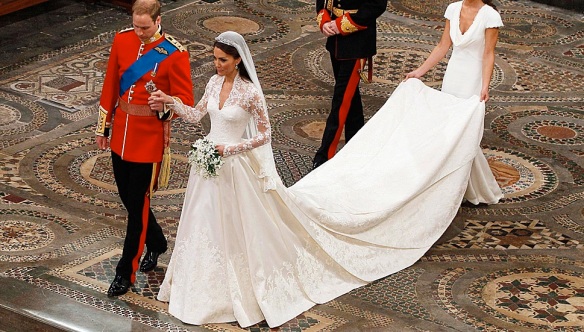
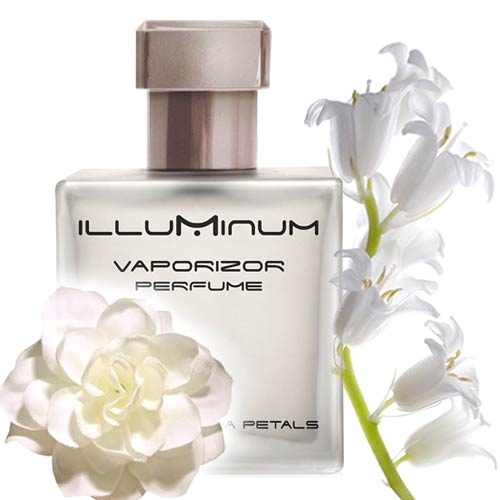
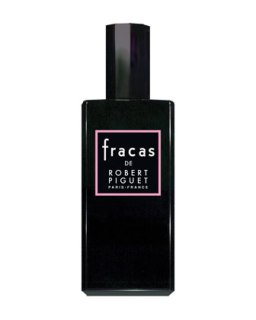

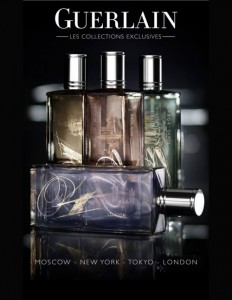 Guerlain has an exclusive, limited distribution collection of unisex fragrances entitled “Une Ville, Un Parfum” or “A City, A Fragrance.” Confusingly, the line is also often referred to as “Les Voyage Olfactifs” (An Olfactory Voyage). Until recently, the cities were Moscow, New York, Toyko and London.
Guerlain has an exclusive, limited distribution collection of unisex fragrances entitled “Une Ville, Un Parfum” or “A City, A Fragrance.” Confusingly, the line is also often referred to as “Les Voyage Olfactifs” (An Olfactory Voyage). Until recently, the cities were Moscow, New York, Toyko and London.
